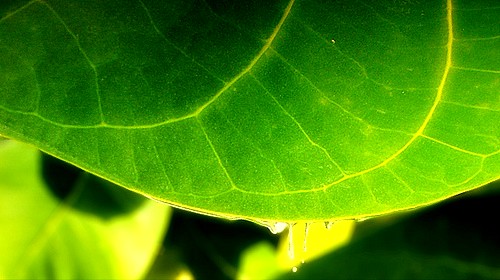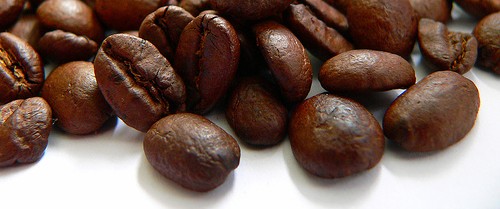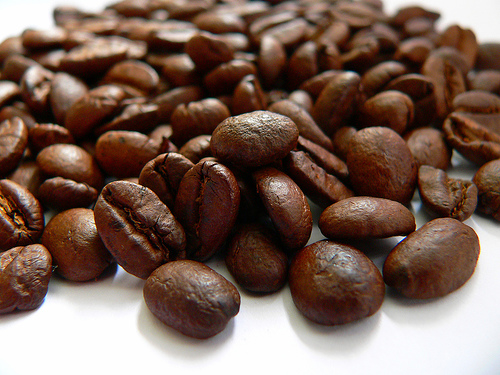Caffeine History
 Cas No. [58-08-2]
Humans have consumed caffeine since the Stone Age. Early peoples
found that chewing the seeds, bark, or leaves of certain plants had
the effects of easing fatigue, stimulating awareness, and elevating
one's mood. Only much later was it found that the effect of caffeine
was increased by steeping such plants in hot water. Many cultures
have legends that attribute the discovery of such plants to people
living many thousands of years ago.
 According to one popular Chinese legend, the Emperor of China
Shennong, reputed to have reigned in about 3000 BC, accidentally
discovered that when some leaves fell into boiling water, a fragrant
and restorative drink resulted. Shennong is also mentioned in Lu
Yu's Cha Jing, a famous early work on the subject of tea. The
history of coffee has been recorded as far back as the ninth
century. During that time, coffee beans were available only in their
native habitat, Ethiopia. A popular legend traces its discovery to a goatherder named Kaldi, who apparently observed goats that became
elated and sleepless at night after grazing on coffee shrubs and,
upon trying the berries that the goats had been eating, experienced
the same vitality. The earliest literary mention of coffee may be a
reference to Bunchum in the works of the 9th century Persian
physician al-Razi. In 1587, Malaye Jaziri compiled a work tracing
the history and legal controversies of coffee, entitled "Undat al
safwa fi hill al-qahwa". In this work, Jaziri recorded that one
Sheikh, Jamal-al-Din al-Dhabhani, mufti of Aden, was the first to
adopt the use of coffee in 1454, and that in the 15th century the
Sufis of Yemen routinely used coffee to stay awake during prayers. According to one popular Chinese legend, the Emperor of China
Shennong, reputed to have reigned in about 3000 BC, accidentally
discovered that when some leaves fell into boiling water, a fragrant
and restorative drink resulted. Shennong is also mentioned in Lu
Yu's Cha Jing, a famous early work on the subject of tea. The
history of coffee has been recorded as far back as the ninth
century. During that time, coffee beans were available only in their
native habitat, Ethiopia. A popular legend traces its discovery to a goatherder named Kaldi, who apparently observed goats that became
elated and sleepless at night after grazing on coffee shrubs and,
upon trying the berries that the goats had been eating, experienced
the same vitality. The earliest literary mention of coffee may be a
reference to Bunchum in the works of the 9th century Persian
physician al-Razi. In 1587, Malaye Jaziri compiled a work tracing
the history and legal controversies of coffee, entitled "Undat al
safwa fi hill al-qahwa". In this work, Jaziri recorded that one
Sheikh, Jamal-al-Din al-Dhabhani, mufti of Aden, was the first to
adopt the use of coffee in 1454, and that in the 15th century the
Sufis of Yemen routinely used coffee to stay awake during prayers.
Towards the close of the 16th century, the use of coffee was
recorded by a European resident in Egypt, and about this time it
came into general use in the Near East. The appreciation of coffee
as a beverage in Europe, where it was first known as "Arabian wine,"
dates from the 17th century. A legend states that after the Ottoman
Turks retreated from the walls of Vienna after losing a battle for
the city, many sacks of coffee beans were found among their baggage.
Europeans didn't know what to do with all the coffee beans, being
unfamiliar with them. So Franz George Kolschitzky, a Pole who had
actually worked for the Turks, offered to take them. He subsequently
taught the Viennese how to make coffee, and the first coffee house
in the Western world was opened in Vienna, thus starting a long
tradition of coffee appreciation. In Britain, the first coffee
houses were opened in London in 1652, at St Michael's Alley,
Cornhill. They soon became popular throughout Western Europe, and
played a significant role in social relations in the 17th and 18th
centuries. wine,"
dates from the 17th century. A legend states that after the Ottoman
Turks retreated from the walls of Vienna after losing a battle for
the city, many sacks of coffee beans were found among their baggage.
Europeans didn't know what to do with all the coffee beans, being
unfamiliar with them. So Franz George Kolschitzky, a Pole who had
actually worked for the Turks, offered to take them. He subsequently
taught the Viennese how to make coffee, and the first coffee house
in the Western world was opened in Vienna, thus starting a long
tradition of coffee appreciation. In Britain, the first coffee
houses were opened in London in 1652, at St Michael's Alley,
Cornhill. They soon became popular throughout Western Europe, and
played a significant role in social relations in the 17th and 18th
centuries.
The kola nut, like the coffee berry and tea leaf, appears to have
ancient origins. It is chewed in many West African cultures,
individually or in a social setting, to restore vitality and ease
hunger pangs. In 1911, kola became the focus of one of the earliest
documented health scares when the US government seized 40 barrels
and 20 kegs of Coca-Cola syrup in Chattanooga, Tennessee, alleging
that the caffeine in its drink was "injurious to health". On March
13, 1911, the government initiated The United States v. Forty
Barrels and Twenty Kegs of Coca-Cola, hoping to force Coca-Cola to
remove caffeine from its formula by making claims, such as that the
excessive use of Coca-Cola at one girls' school led to "wild
nocturnal freaks, violations of college rules and female
proprieties, and even immoralities." Although the judge ruled in
favor of Coca-Cola, two bills were introduced to the U.S. House of
Representatives in 1912 to amend the Pure Food and Drug Act, adding
caffeine to the list of "habit-forming" and "deleterious" substances
which must be listed on a product's label.
The earliest evidence of cocoa use comes from residue found in an
ancient Mayan pot dated to 600 BC. In the New World, chocolate was
consumed in a bitter and spicy drink called xocoatl, often seasoned
with vanilla, chile pepper, and achiote. Xocoatl was believed to
fight fatigue, a belief that is probably attributable to the
theobromine and caffeine content. Chocolate was an important luxury
good throughout pre-Columbian Mesoamerica, and cocoa beans were
often used as currency.
Xocoatl was introduced to Europe by the Spaniards and became a
popular beverage by 1700. They also introduced the cacao tree into
the West Indies and the Philippines. It was used in alchemical
processes, where it was known as Black Bean.
The leaves and stems of the Yaupon Holly (Ilex vomitoria) were used
by Native Americans to brew a tea called Asi or the Black Drink the
use of which among Native American groups archaeologists have
demonstrated to stretch back far into antiquity, possibly dating to
Late Archaic times.

>>
New Product
Introduced :
Oseltamivir
Phosphate,
Phenyl Propanolamine,
Phenylephrine,
Etafedrine

|

 We all know that one of the most
powerful chemical compounds found in both coffee and tea is
caffeine. Has caffeine become an important part of your daily life?
Did you know We all know that one of the most
powerful chemical compounds found in both coffee and tea is
caffeine. Has caffeine become an important part of your daily life?
Did you know
Article : What Is Caffeine?
 Caffeine is a drug that is naturally
produced in the leaves and seeds of many plants. It's also produced
artificially and added to certain foods. Caffeine is defined as a
drug because it stimulates the central nervous system, causing
increased alertness. Caffeine gives most people a temporary energy
boost and elevates mood. Caffeine is a drug that is naturally
produced in the leaves and seeds of many plants. It's also produced
artificially and added to certain foods. Caffeine is defined as a
drug because it stimulates the central nervous system, causing
increased alertness. Caffeine gives most people a temporary energy
boost and elevates mood.
Caffeine is in tea, coffee, chocolate, many soft drinks, and pain
relievers and other over-the-counter medications. In its natural
form, caffeine tastes very bitter. But most caffeinated drinks have
gone through enough processing to camouflage the bitter taste.
Teens usually get most of their caffeine from soft drinks and energy
drinks. (In addition to caffeine, these also can have added sugar
and artificial flavors.) Caffeine is not stored in the body, but you
may feel its effects for up to 6 hours.
![Caffeine Cas No. [58-08-2]](caffeine/CAFFEINE%20LOGO%20SMALL.bmp)
|


